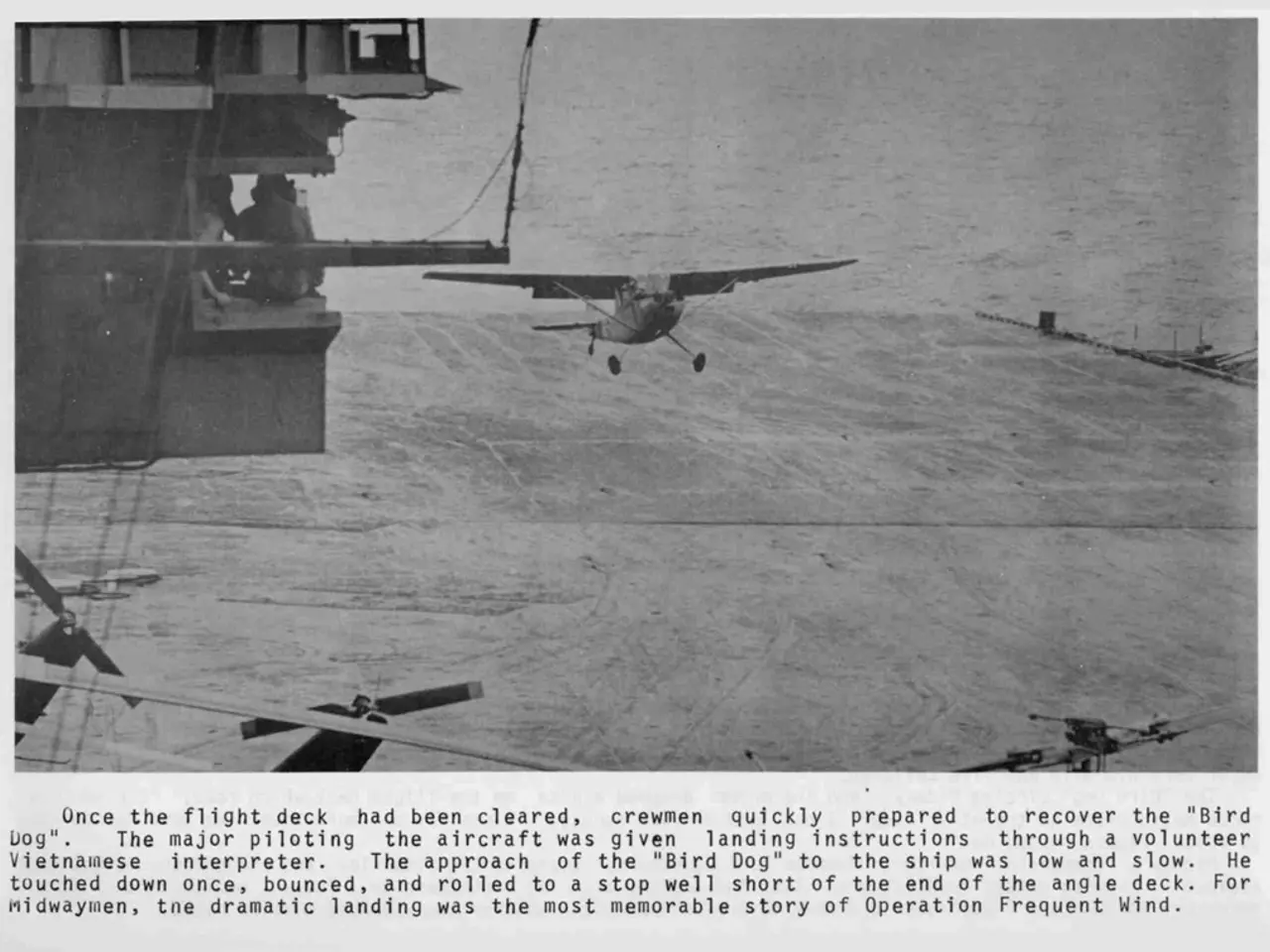US Military Launches B-52 Bomber Operations in Guam, Intensifying Pacific War Games
The Air & Space Forces Association brings you news of the latest deployment of U.S. B-52 bombers to Guam. This strategic move is part of ongoing training exercises in the Indo-Pacific region, with approximately 300 aircraft involved in total.
The B-52 bombers, belonging to the 23rd Expeditionary Bomb Squadron, have been deployed from Minot Air Force Base in North Dakota to Andersen Air Force Base, Guam. They arrived on July 8, 2025. This deployment is a continuation of the U.S. Air Force's shift from a continuous bomber presence in Guam, which ended in 2020, to periodic task force deployments that maintain unpredictability of bomber basing and operational integration with regional partners.
At least two B-52s have been confirmed by open-source flight tracking data, but the precise number of bombers has not been publicly detailed. The B-52H Stratofortress bombers bring capabilities including long-range strikes with nuclear or precision-guided conventional ordnance from high subsonic speeds and altitudes up to 50,000 feet, making them a credible deterrent and versatile platform for Indo-Pacific missions.
The deployment aims to reinforce strategic deterrence missions and uphold the rules-based international order amid growing geopolitical tensions, particularly as a demonstration of U.S. commitment to regional allies and readiness to respond to flashpoints such as the South China Sea and Taiwan Strait. It also seeks to enhance operational resilience by enabling bombers to operate from a broad array of overseas and U.S. locations.
The B-52s operating from Guam are participating in regional joint events, and Guam remains a regular spot for U.S. bombers. The Pentagon has not specified the missions the B-52s are scheduled to conduct during their deployment, but the exercise, called Resolute Forces Pacific (REFORPAC), is designed to strengthen alliances, improve interoperability, and demonstrate the U.S. commitment to the region.
This deployment coincides with a large-scale USAF exercise in the region, underscoring the U.S. military's focus on maintaining a strong presence in the Indo-Pacific. The B-52s, now assigned to the 5th Bomb Wing, are operating as the 23rd Expeditionary Bomb Squadron while deployed.
While B-2 Spirits were stationed on Diego Garcia until a ceasefire with the Houthis in Yemen, the current deployment to Guam does not involve B-2s. However, four additional B-52s are deployed on Diego Garcia in the Indian Ocean.
In summary, the deployment is a strategic signal amid rising Indo-Pacific military and political tensions, emphasizing training interoperability with allies and partners, operational readiness, and deterrence in the face of increasing Chinese military activity in contested regional areas.
- The 23rd Expeditionary Bomb Squadron, part of the U.S. Air Force, has been deployed from Minot Air Force Base to Andersen Air Force Base, Guam, using B-52 bombers to participate in ongoing training exercises in the Indo-Pacific region.
- The aerospace industry played a significant role in the deployment, as the B-52H Stratofortress bombers are advanced aircraft that can carry out long-range strikes from high altitudes, making them a versatile platform for Indo-Pacific missions.
- The Pentagon, a crucial part of the U.S. military, has not detailed the precise number of bombers involved in the deployment, but there are approximately 300 aircraft participating in these exercises.
- The finance sector may have played a role in funding this deployment, as it aims to reinforce strategic deterrence missions, uphold the rules-based international order, and demonstrate the U.S. commitment to regional allies.
- The space force, while not directly involved in this deployment, is likely monitoring the Indo-Pacific region to support the U.S. Air Force and the broader military industry in maintaining a strong presence in the contested region, as growing geopolitical tensions continue to escalate.








